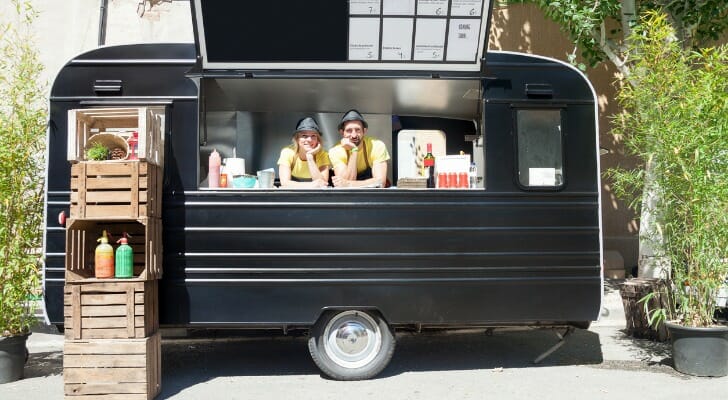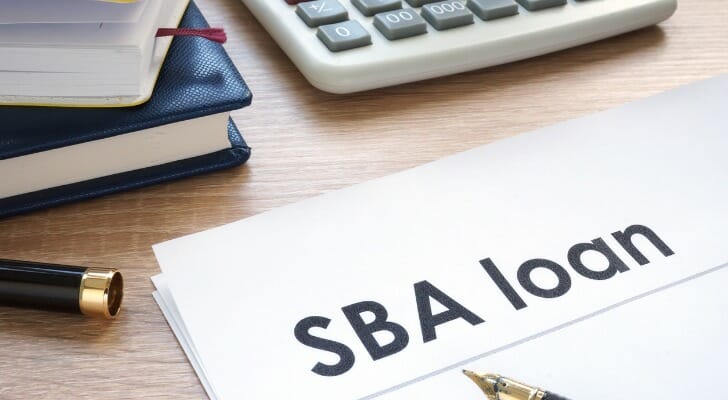 One of the most important functions of the Small Business Administration (SBA) is to help entrepreneurs and small businesses raise funds to open or expand a business. To assist with this, the SBA offers two main types of loans, 7(a) loans and pilot programs. Pilot programs are new lending programs that are introduced to expand the SBA’s range of options. One such pilot program is the Community Advantage loan program which aims to help entrepreneurs in disadvantaged areas. If you’re considering borrowing money for your business or for your personal finances, consider working with a financial advisor to get all of your questions answered.
One of the most important functions of the Small Business Administration (SBA) is to help entrepreneurs and small businesses raise funds to open or expand a business. To assist with this, the SBA offers two main types of loans, 7(a) loans and pilot programs. Pilot programs are new lending programs that are introduced to expand the SBA’s range of options. One such pilot program is the Community Advantage loan program which aims to help entrepreneurs in disadvantaged areas. If you’re considering borrowing money for your business or for your personal finances, consider working with a financial advisor to get all of your questions answered.
Community Advantage Loan Program
Although the Community Advantage program is considered a pilot program, it has existed since 2011. It is particularly valuable to entrepreneurs and business owners who aim to start or expand enterprises. The program helps secure loans for small businesses in typically underserved communities, with a specific emphasis on ones that operate in public interest fields.
The primary goal of the program is to expand the types of lenders who work with the SBA and, as a result, the communities that the SBA can reach. This program can help businesses get up to $250,000 in funding. The SBA will guarantee up to 85 percent of the loan if it is under $150,000 and guarantee up to 75 percent of the loan if it is over that amount. Lenders may charge no more than the prime interest rate plus 6 percent.
At the time of writing the Community Advantage loans, the pilot program is scheduled to expire in 2024.
How Do Community Advantage Loans Work?
 Most SBA loans are handled by traditional banks. This makes them a good fit for many small businesses that want to operate in wealthy areas and for entrepreneurs who can raise a significant amount of money as their own share in the loan. However, it means that these loans often don’t reach businesses in low-income or otherwise neglected communities, nor do they often work with nontraditional lenders.
Most SBA loans are handled by traditional banks. This makes them a good fit for many small businesses that want to operate in wealthy areas and for entrepreneurs who can raise a significant amount of money as their own share in the loan. However, it means that these loans often don’t reach businesses in low-income or otherwise neglected communities, nor do they often work with nontraditional lenders.
The Community Advantage program tries to expand SBA lending to small businesses in underserved communities. It does this by creating loan guarantees specifically for “mission-oriented lenders, primarily nonprofit financial intermediaries focused on economic development.” This program tries to develop businesses in underserved communities such as rural towns and low-income urban neighborhoods by backing loans specifically from local lenders.
The SBA requires that any Community Advantage lender must make at least 60 percent of its loans in a defined “underserved market.” Per guidance issued by the agency, these include:
- Low-to-moderate income communities, emphasizing low and very-low-income communities
- Businesses where more than 50% of the full-time workforce is low-income or resides in a low-income community
- Legally defined empowerment zones and enterprise communities
- HUBZones
- New businesses (firms in business for no more than two years)
- Veteran-owned businesses
- Legally defined promise zones
- Legally defined opportunity zones
- Rural areas
A lender also must have one of four statuses to participate in the program:
- Certified Development Companies (CDCs)
- Microloan program intermediaries
- Intermediary Lending Pilot (ILP) program Intermediaries
- Non-federally regulated Community Development Financial Institutions (CDFIs) certified by the U.S. Treasury Department
Community Advantage Loans for Borrowers

For-profit businesses in underserved markets that can meet SBA’s size standards may apply for this type of loan. Typically, borrowers have been in business for fewer than
three years and do not qualify for traditional financing elsewhere. Although a borrower must prove creditworthiness and the viability of the business idea, unlike traditional lending, qualification for this program is not limited by the size of the borrower’s balance sheet or the amount of collateral involved.
Borrowers must meet the SBA’s basic eligibility requirements that it sets for all of its loans. Your application for a Community Advantage loan must show that you are a private, for-profit business, for example, with fewer than 500 employees and no delinquent loans with the agency.
As with most other SBA loans, borrowers apply through the lender. This lender will set many of the specific requirements, such as credit score and up-front capital requirements, and establishes interest and payment plans with the borrower. In practice, many Community Advantage lenders tend to show flexibility when it comes to credit issues or capital contributions. By design, these lenders generally work in the nonprofit space and focus on helping entrepreneurs who couldn’t find startup money anywhere else. However, this is not a requirement of the program.
Here is a list of the 100 most active SBA 7(a) lenders.
How Do SBA Loans Work?
The SBA helps small businesses and entrepreneurs find money by encouraging liquidity in the lending market by backing loans made by third-party lenders on a wide variety of terms. When a small business takes out an SBA loan, they are actually taking out a loan from a bank, credit union or another third-party lender. The SBA will guarantee that the loan is based on terms defined by the individual program the small business applied for. The lender extends the loan based on terms it sets, within limits established by the SBA. The borrower repays the lender, and the SBA guarantees the loan in case of borrower default.
For example, say that a small business owner applies for a standard 7(a) SBA loan worth $500,000. This is (as the name suggests) the most common form of lending through the SBA. The owner would receive this loan from their local bank and would make payments to that bank. The borrower and lender would establish terms such as the interest rate and minimum payments between themselves, subject to caps set by the standard 7(a) loan program. The SBA would guarantee up to 75 percent of this loan, meaning that if our small business owner defaults the SBA will reimburse the bank for up to 75 percent of the defaulted loan.
Except for emergency or disaster relief, all SBA loans work this way. The agency backs and guarantees loans. This makes it easier for small businesses and entrepreneurs to borrow money because they effectively have the federal government as co-signer.
The Bottom Line
Community Advantage loans, which are set to expire in 2022, are a lending program established by the SBA to help encourage lending in traditionally underserved communities. This program can help businesses get up to $250,000 in funding. The SBA will guarantee up to 85 percent of the loan if it is under $150,000 and up to 75 percent of the loan if it is over that amount. The interest on such loans may not exceed the prime interest rate plus 6 percent.
Like any SBA loan, Community Advantage Loans may be particularly useful to businesses dealing with the coronavirus crisis. While programs like Paycheck Protection Program (PPP) loans and Economic Injury Disaster Loans (EIDLs) are getting the most attention, don’t forget about Community Advantage Loans and other pilot programs to meet your needs.
Tips for Accessing Small Business Assistance
- Many financial advisors specialize in helping business owners plan for the future. Finding the right financial advisor who fits your needs doesn’t have to be hard. SmartAsset’s free tool matches you with up to three financial advisors who serve your area, and you can interview your advisor matches at no cost to decide which one is right for you. If you’re ready to find an advisor who can help you achieve your financial goals, get started now.
- Learn more about how small businesses are dealing with the coronavirus crisis. Our guide can walk you through the small business relief programs, how you qualify and how you apply.
Photo credit: ©iStock.com/VioletaStoimenova, ©iStock.com/Maica, ©iStock.com/designer491